Alaska’s Aleutian Islands (Volcano Week 6)
Thursday, 25th August 2011 by Ian Brown
The Aleutian Islands are the northern boundary of the Pacific Ocean's 'ring of fire'. Starting just off the Alaska Peninsula, an arc of more than 300 volcanic islands stretches for almost 2,000km across the Pacific. While the majority of the islands are part of the state of Alaska, a few of the westernmost islands are Russian territory1.
While the Aleutian arc continues on mainland Alaska, we'll focus on a few of the more prominent volcanic islands and other points of note. The islands are generally clustered into five groups - Fox, Islands of Four Mountains, Andreanof, Rat and Near.
The Fox group is closest to the Alaskan mainland. It includes Unimak which happens to be the largest island in the chain, and has the tallest volcano - Mount Shishaldin - as well as several other volcanic features.
Mount Shishaldin reaches almost 2,900m and is a perfect example of the classic cone-shaped volcano. There appear to be some colour-matching issues with the satellite image, but does zooming in as far as possible really reveal glowing lava at the centre of the cone? This volcano last erupted in 1999, and it is still very seismically active.
The Western end of Unimak island has a pair of volcanoes - Pogromni and Westdahl. In the centre of the island is Fisher Caldera, a volcanic zone with numerous small cones and a vivid blue lake. At the eastern end of the island there is a small village called False Pass. It has less than a 100 residents, and is not visible on the low resolution image of the area.
The islands are named for the Aleuts - the indigenous population of the islands and surrounding region. While at one time they may have numbered around 25,000, outside influences have reduced the population to approximately 2,000. The Aleut language, with 3 dialects, is thought to be dying out.
Still within the Fox Islands group, Unalaska is another large island, with Makushin volcano dominating the northern coast. With frequent eruptions recorded in the 18th, 19th and 20th centuries, and regular earthquakes detected, it's likely only a matter of time before Makushin erupts again.
To the east of the volcano the island of Unalaska is connected by bridge to the small island of Amaknak and the town which shares the larger island's name. Tere is also the port of Dutch Harbor which has become well-known for its crab-fishing fleet featured in the TV show Deadliest Catch.
The next group to the west is called Islands of Four Mountains, though there are actually eight islands in the cluster.
Many of them are simple volcanic cones with no other land area. The satellite coverage of the area is patchy, with some, like Mount Cleveland, being split between high- and low-resolution images. Thankfully the lovely shadow of the peak of the cone is on the high-res side!
Mount Cleveland is currently considered at risk of eruption, with potential hazard to air traffic across the region.
Continuing to the west we reach the Andreanof group of islands, with the satellite coverage getting even more random as we get further from the mainland.
There is a small area of high-resolution images (albeit split between winter and summer) covering the town of Adak, on the island of the same name. At one time this was a busy naval station with several thousand personnel on the island, but today just over 300 hardy souls live in this isolated municipality, which is the westernmost in the US.
Abandoned facilities can be spotted in several areas on the way to Mount Adagdak, an extinct volcano in the north of the island.
US Military facilities in the Aluetians became a necessity during World War II when Japanese forces invaded a pair of islands.
Kiska (in the Rat Island group) has a large volcano at its northern end, though it is obscured by cloud in the low-res image. An area of better imagery reveals remnants of battlements near the coast.
Attu (in the Near Island group) does not have any volcanic features, but like the rest of the Aluetians, seismic activity is a regular occurence. There is a military airport near the harbour that was built after the US regained control of the island.
I love the little bridge part way down the runway, with a stream flowing beneath! I wonder if it gets washed out by snowmelt each spring?
Learn more about the Aleutian Islands at Wikipedia and at the National Wilderness Preservation System which controls much of the area.
There is much more I could write about this fascinating region, so look for it to reappear next year during Volcano Week!
-
While the Aleutians are generally considered to be the westernmost point of the US, a certain viewpoint sees certain islands as the easternmost point! This is a debate I first learned about when writing about Cape Spear, where you'll find more information in the comments. ↩︎
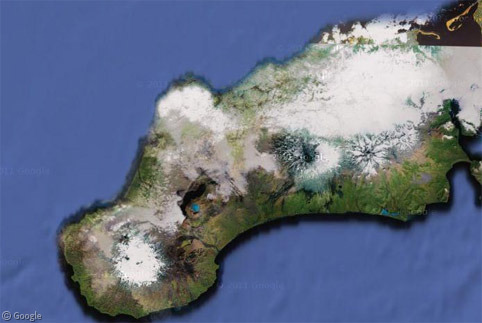
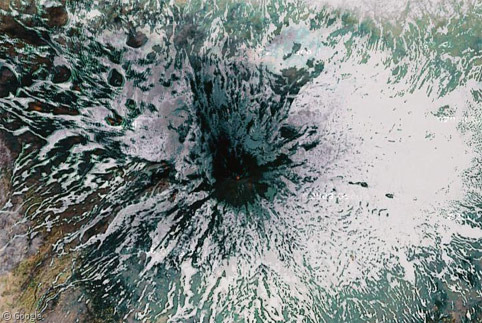
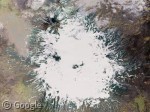
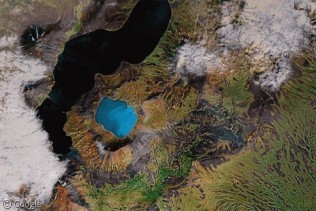
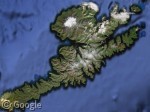
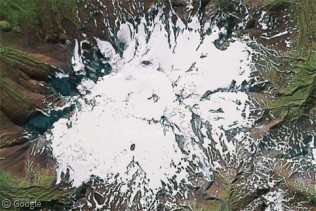
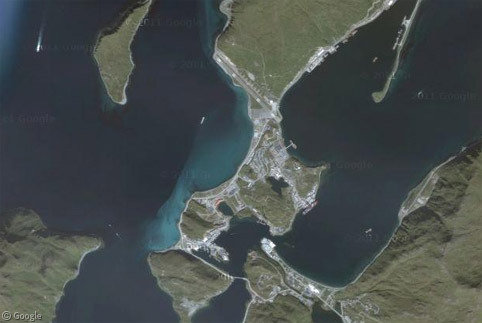
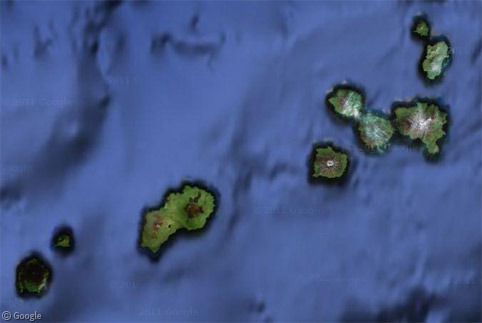
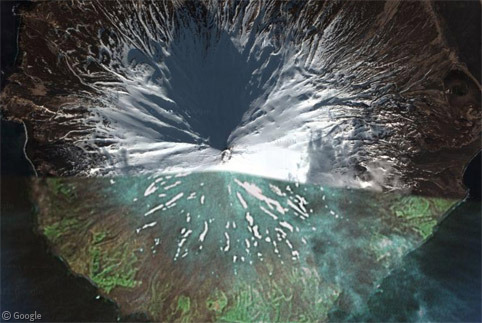
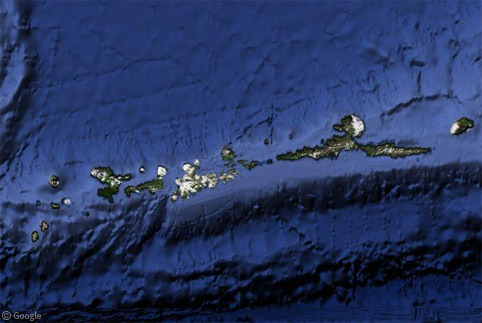
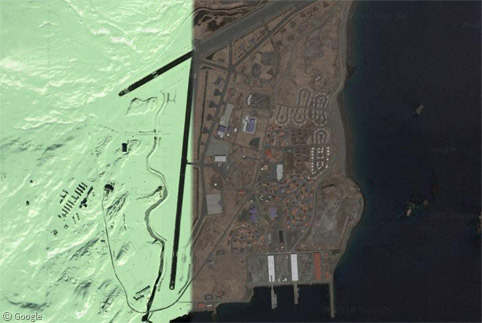
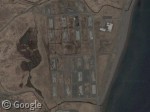
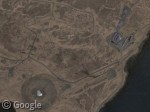
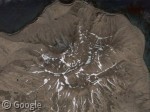
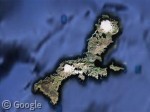
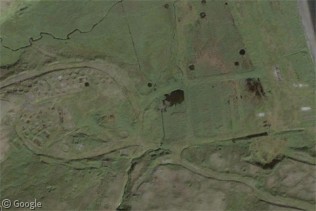
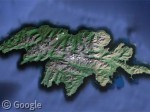
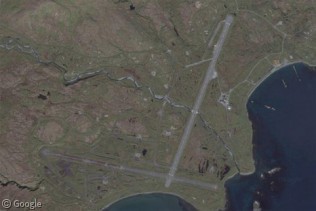
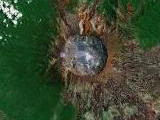
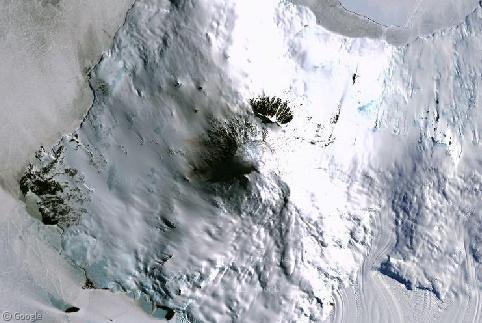
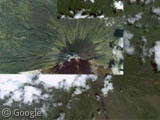
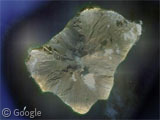
While it has nothing to do with volcanoes, Amchitka island (the southern most Rat Island) was used to test three thermonuclear weapons underground. Google gets a “fail” for taking beautiful, hi-res pictures of the Amchitka in winter when it was covered in snow and nothing is visible other than vague outlines. http://g.co/maps/7h5b
I’d say that is indeed glowing lava on Mount Shishaldin. Cool find!